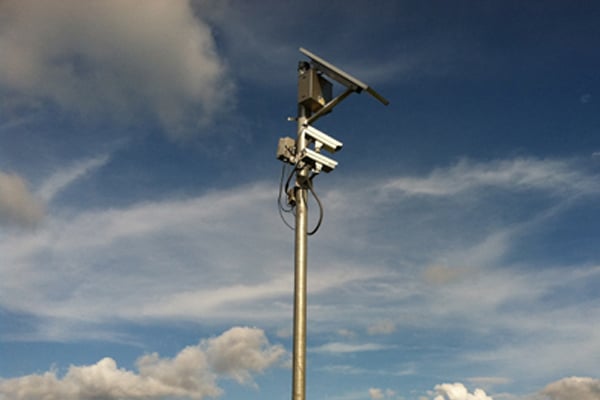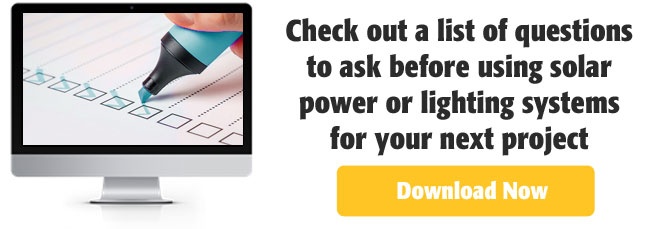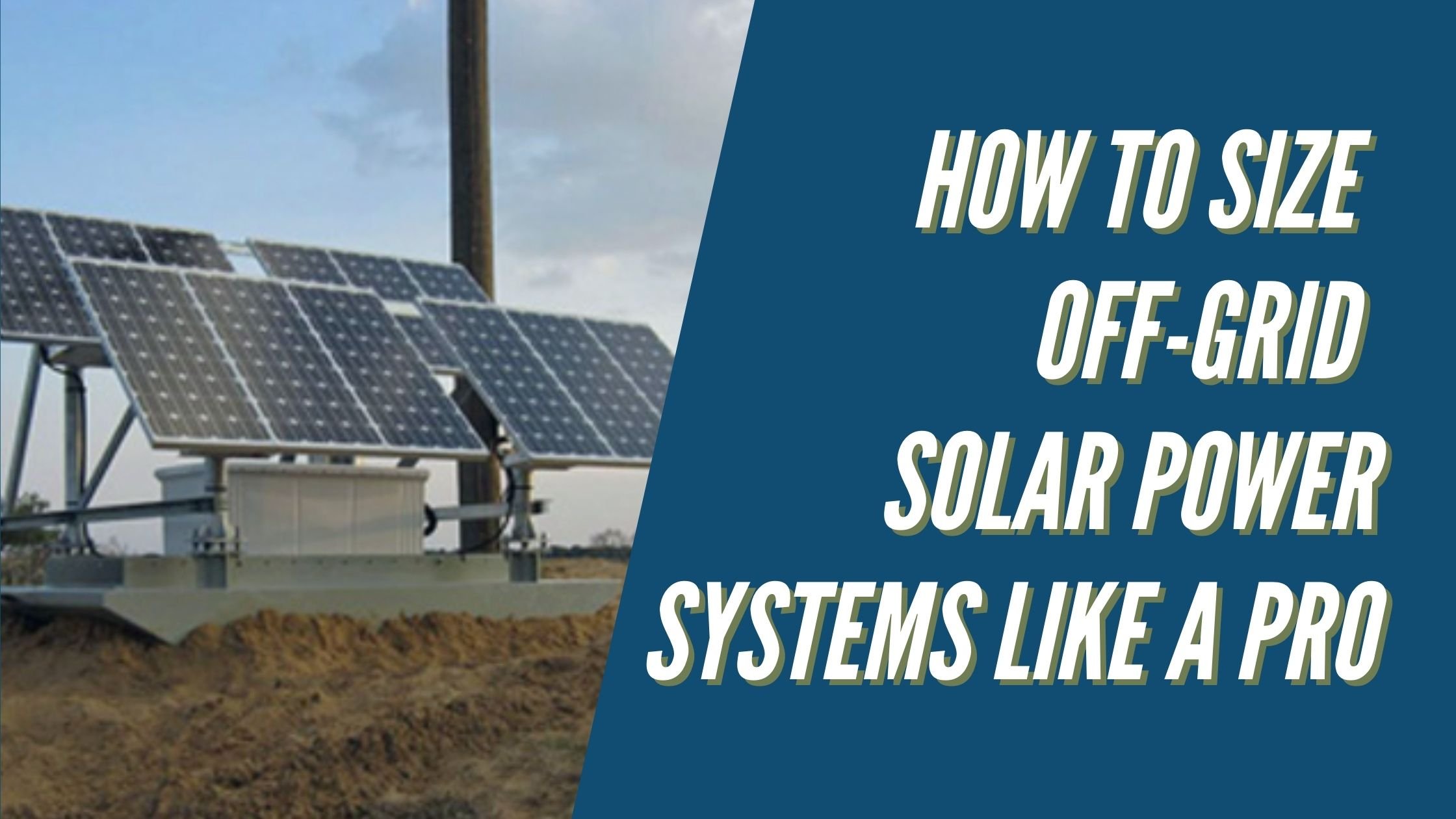Off-grid solar power sizing can be tricky since you need to take into account many different factors so that you are never left without power. You also have to figure out how many solar panels it will take to run your application while also keeping costs down, as well as how large of a battery storage system you will need. Here is how you can size your off-grid solar power system to perform year-round under any condition the world wants to throw at you, built specifically for your needs.
The first thing you need to do is figure out your load. How much energy (Amps at 12VDC) is needed in a single day to power your device (home, business, camera, light, etc.). This can be found by looking at the specifications of the item or following a chart of usage over time, such as an energy bill. For this example, we will use a small system such as the Riolink WiFi DC camera.
Let’s say your camera draws 5.5 Watts, which converts to 0.4583 Amps at 12VDC and it runs 24 hours a day. This would require a total of 11 Amp per day supplied by the solar panel to provide the needed power to keep the camera on at all times. This number can change depending on the number of run hours your system actually requires; however, with some systems like a camera, it is best to opt for the worst-case which would be 24 hours. This ensures that you have plenty of power to cover everything.

The second factor that needs to be determined is what is the amperage of the solar panel you want to use? This can be found on the solar panel specification page. You then take the total Amps provided by a single solar panel and multiply it by the number of sun hours available in your area. Make sure to look at the worst month (December for north of the equator).
This information is available on NREL's Photovoltaic Solar Resource Map. Once you have figured out this you can start to figure out how many panels you will need to run your system reliably. For this example, we will use 3.5 sun hours available with a 75 Watt solar panel that produces around 4 Amps per hour.
To complete the calculation, you need 11 Amps provided per day to provide just enough power to operate the camera all day and you have 3.5 sun hours available. You take the total Amps required and divide that by the amount of sun available: 11 / 3.5 = 3.15. You should add a 20% overage to this number to account for times of inclement weather which would bring the total to 3.78 total Amps required by the solar panel per hour. Therefore, the 75 Watt panel will work in this case as it produces around 4 Amps per hour (4 x 3.5 = 14 - 11 = 3 Amps per day).
Battery backup is what you need for an off-grid solar application. Making sure you have enough battery storage is essential to keep the power on for the system as well as taking into account cloudy/stormy days and having plenty of back-ups. If you need a total of 11 Amp for a single day, making sure you have adequate days storage will help get you through those not-so-sunny days, and for most applications, a minimum of five nights autonomy is required, more in northern locations.
Multiply the total Amps by the desired days of storage: 11 Amps per day x 5 days = 55 Amps at 12VDC. This means that if you have a battery capacity of 55 Amps or more, you will have enough backup to ensure that your application can operate without a full charge for up to 5 days at 24 hours per day with zero sun.
Larger systems, like say for a large WiFi tower in the example above, required much more power, and therefore a much larger battery backup. Then there are much smaller systems like the camera we used for our example calculations. If you get stuck, speak with your solar specialist and they will help you determine how much power your project will require.
Well, that's about it. If you make sure you have enough solar to provide energy every day and a battery system that holds at least five times your daily load, your system will not run out of power and will run reliably for years. Best of all, there is little to no maintenance on these types of systems.



